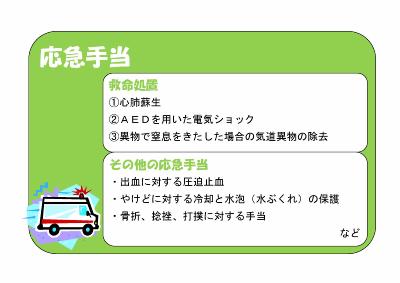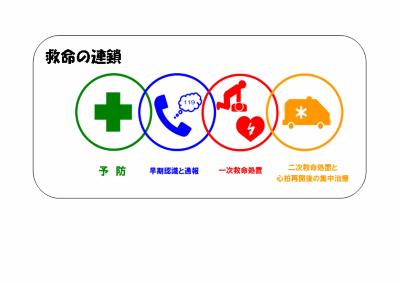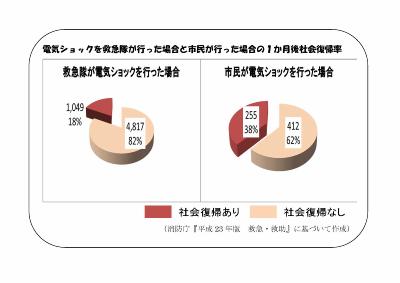Here's the text.
What is First Aid?
Last Updated August 5, 2024
What is First Aid?
For sudden injuries and illnesses, benefits that can be done at family and workplaces are called first aid in a broad sense. First aid is for patients with cardiac arrest and for general injuries and illnesses other than cardiac arrest, such as compression hemostasis for bleeding, which is used to prevent deterioration and reduce pain. There are other first aid treatments.

First Aid Summary
What is CPR?
In first aid, cardiopulmonary resuscitation refers to performing chest compressions and artificial respiration when cardiopulmonary arrest, that is, when the heart and breathing are stopped or close to this. In addition, cardiopulmonary resuscitation is also included when only chest compressions are performed without artificial respiration.
What is a life-saving treatment?
Refers to the procedure necessary to save the victim. Specifically, we refer to the following three.
- CPR
- Electric shock using AED
- Removal of airway foreign substances when suffocated by foreign substances
Life-saving measures by citizens, including electric shocks, can be performed by anyone without special qualifications.
Primary and Secondary Lifesaving
Lifesaving treatment by citizens is called "primary life-saving treatment", and advanced life-saving treatment performed by doctors and paramedics is called "secondary life-saving treatment".
About the chain of life-saving
A series of actions required to save a sudden change of victim and return to society is called the "chain of lifesaving." If the four rings that make up the "chain of lifesaving" are quickly connected, the life-saving effect will increase.

Chain of life
The first ring (prevention of cardiac arrest)
The main causes of child cardiac arrest are injuries, drowning, and suffocation. It is more important than anything else. Acute myocardial infarction and stroke are the causes of sudden death in adults. These are also known as lifestyle-related diseases, and are the three major causes of death in Japan along with cancer. It is important to reduce the risk of lifestyle-related diseases, but it is important to be aware of the initial symptoms and request an ambulance. This makes it possible to treat at a medical institution before cardiac arrest.
The second ring (early recognition and notification of cardiac arrest)
In order to recognize cardiac arrest early, it is important to suspect cardiac arrest immediately if you see a person suddenly falling or unresponsive person.
The third ring (primary life-saving treatment)
When the heart stops, consciousness disappears within 15 seconds, and it becomes difficult to recover the brain if it continues for more than 3-4 minutes. Keeping blood to the heart and brain through cardiopulmonary resuscitation while the heart is stopped is important to improve the effectiveness of AED resuming heartbeat and to prevent sequelae in the brain after resuming the heartbeat.
4th ring (secondary life-saving treatment and intensive treatment after resuming heart rate)
Paramedics and doctors perform secondary lifesaving treatment using drugs and airways in parallel with primary lifesaving treatment, aiming to resume the heartbeat of more victims. When heartbeat resumes, we aim to return to society through intensive treatment by specialists.
The importance of first aid
The chain of life-saving consists of four rings: prevention of cardiac arrest, early recognition and notification of cardiac arrest, primary life-saving, secondary life-saving, and intensive care after resuming heartbeat. It is expected to be performed by the citizens who are present. The survival rate is higher than when cardiopulmonary resuscitation was not performed by citizens, and if citizens performed an electric shock using AED, an electric shock is faster than the arrival of emergency services. It has become clear that the survival rate and rehabilitation rate are higher.

Return to society
Inquiries to this page
Emergency Guidance Division, Fire Bureau Emergency Department
Telephone: 045-334-6797
Telephone: 045-334-6797
Fax: 045-334-6710
Email address: sy-kyukyushido@city.yokohama.lg.jp
Page ID: 316-358-657







